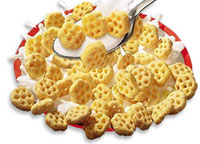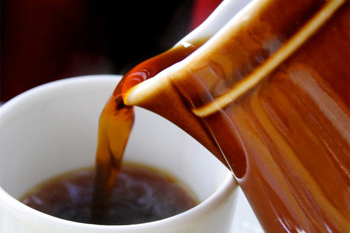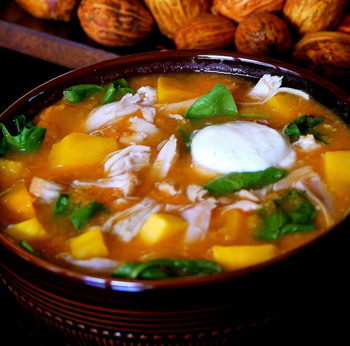 A fork by any other name would still be a fork. Unless you called it your hands. Then the fork is rendered moot. Hands are more versatile than forks. They posses a way cooler gadget. The opposable thumb (come-up of all evolutionary come-ups) possesses some remarkable moves.
A fork by any other name would still be a fork. Unless you called it your hands. Then the fork is rendered moot. Hands are more versatile than forks. They posses a way cooler gadget. The opposable thumb (come-up of all evolutionary come-ups) possesses some remarkable moves.
Unfortunately we don’t often get to put those moves into practice with familiar western cuisine. But why rely on some intermediary device to enjoy that most intimate sensation of eating? Some form of artifice, really, when we consider that we already have what it takes.
My earliest inclinations were to forgo tools and bound the gulf between food and eating (associations begin firing at Lacan’s l’hommelette, a slippery slope). My favorite foods (burritos, sushi) can technically and efficiently be eaten with one’s hands. Still, my lifetime eating career has been dominated by silverware.
Until my wife introduced me to her native cuisine. Nepali food predates industrial metal forgery and globalization. Silverware was not a concern when the recipes took shape, nor is it a concern today when they’re served.

 My mother prepared us breakfast every day of the week because she was
not about to send us off to school on an empty stomach. Yet the only
day I really remember eating breakfast was on Saturday. Not because she
cooked an elaborate spread, but because we were left to fend for
ourselves. It was the one morning my parents slept in – probably only
to about 8 or 9, but it seemed like all morning and it was a thrill to be without parental supervision in the dining room. My siblings and I weren’t what
you’d call “skilled” in the culinary arts, but we were quite capable of
pouring a bowl cereal…and that’s where the trouble started.
My mother prepared us breakfast every day of the week because she was
not about to send us off to school on an empty stomach. Yet the only
day I really remember eating breakfast was on Saturday. Not because she
cooked an elaborate spread, but because we were left to fend for
ourselves. It was the one morning my parents slept in – probably only
to about 8 or 9, but it seemed like all morning and it was a thrill to be without parental supervision in the dining room. My siblings and I weren’t what
you’d call “skilled” in the culinary arts, but we were quite capable of
pouring a bowl cereal…and that’s where the trouble started. A few years ago, my sister Laraine and I were having lunch on Larchmont at one of my favorite sushi restaurants, redundantly called California Roll and Sushi Fish. (My sister is Laraine Newman, of SNL fame and a regular contributor to this website.) My seat was facing out toward the other tables and Laraine was facing me. We had ordered and were both very hungry.
A few years ago, my sister Laraine and I were having lunch on Larchmont at one of my favorite sushi restaurants, redundantly called California Roll and Sushi Fish. (My sister is Laraine Newman, of SNL fame and a regular contributor to this website.) My seat was facing out toward the other tables and Laraine was facing me. We had ordered and were both very hungry. I’m changing – slowly, but surely, morphing into some life form I no longer recognize as myself. With this neurotic thought stampeding through my mind, I rise this morning and put up a pot of Rose’s favorite coffee—Peets Major Dickason. Despite her penchant to skip breakfast, I prepare a healthful little dish, hoping my angel will think twice: a dollop of non-fat yogurt sprinkled with Urth Café granola and topped with a red glistening strawberry. Into the kitchen she comes, looking every bit the marketing director of an International law firm that she is and the woman whose bras I’m continually picking up off our bedroom floor. I proudly present her the breakfast plate. “Would you mind getting my dry cleaning today, honey?” she asks, walking by me to the coffee pot, where she fills her cup to the brim. I tell her I’ll think about it. A perfunctory peck to my cheek and she’s gone, off to work.
I’m changing – slowly, but surely, morphing into some life form I no longer recognize as myself. With this neurotic thought stampeding through my mind, I rise this morning and put up a pot of Rose’s favorite coffee—Peets Major Dickason. Despite her penchant to skip breakfast, I prepare a healthful little dish, hoping my angel will think twice: a dollop of non-fat yogurt sprinkled with Urth Café granola and topped with a red glistening strawberry. Into the kitchen she comes, looking every bit the marketing director of an International law firm that she is and the woman whose bras I’m continually picking up off our bedroom floor. I proudly present her the breakfast plate. “Would you mind getting my dry cleaning today, honey?” she asks, walking by me to the coffee pot, where she fills her cup to the brim. I tell her I’ll think about it. A perfunctory peck to my cheek and she’s gone, off to work. Growing up there were just some things
that this little pudgy boy would not eat. High on the short list of
food items, along with sour cream and avocados, was this recipe called
Capirotada. No matter how hard they tried I just wouldn’t move past the
strange blend of ingredients that went into this Mexican bread pudding.
Growing up there were just some things
that this little pudgy boy would not eat. High on the short list of
food items, along with sour cream and avocados, was this recipe called
Capirotada. No matter how hard they tried I just wouldn’t move past the
strange blend of ingredients that went into this Mexican bread pudding.
